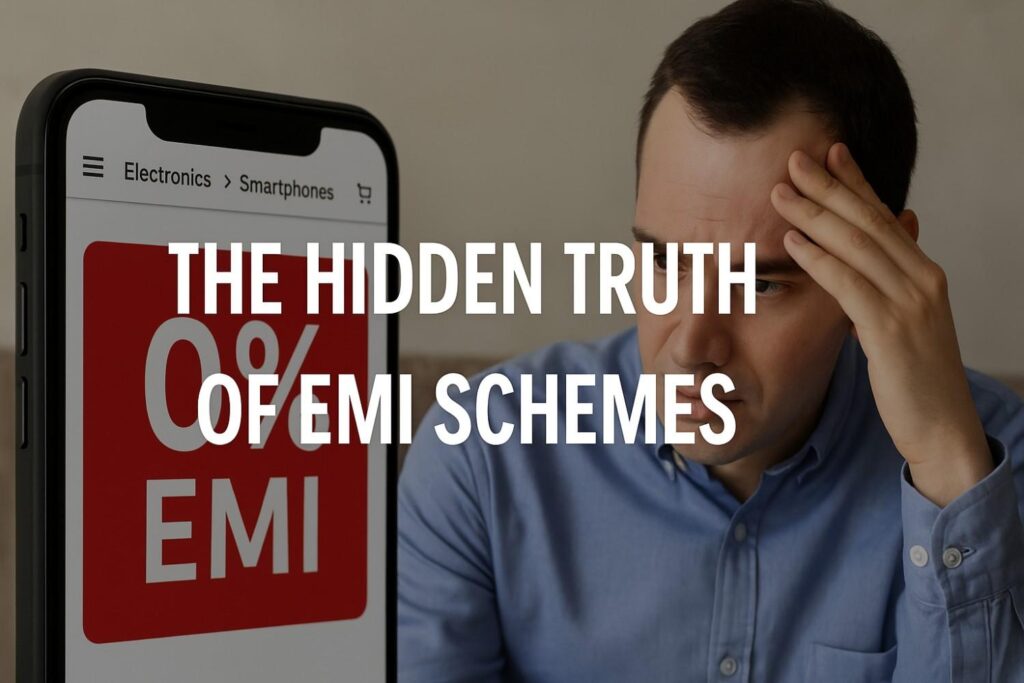Introduction
From mobile apps to big shopping websites, everywhere you look, there’s a tempting EMI offer. “0% EMI,” “No Cost EMI,” or “Pay just ₹999/month” sounds like a steal, right? But is it truly cheap? Or are there hidden traps behind these schemes? In this article, we’ll uncover the hidden realities behind EMI schemes that customers often miss.

What is an EMI Scheme?
EMI stands for Equated Monthly Installment. It allows you to purchase a product without paying the entire price upfront and instead pay in fixed monthly installments over a set period. Companies push this facility aggressively to increase sales.
Common Tricks Behind EMI Schemes
1. Processing Fee Trap
Many EMI schemes involve a 2–5% processing fee that isn’t always disclosed upfront.
2. No-Cost EMI Deception
Companies claim ‘No-Cost EMI,’ but actually adjust by increasing the product’s MRP or removing discounts you might otherwise get.
3. Hidden Charges
Late payment penalties, ECS bounce fees, account activation charges — all hidden in fine print.
4. High-Interest Rates
Sometimes, under the guise of a “cheap EMI,” companies charge as high as 18–36% interest, which is often more expensive than a regular loan.
Dangers of EMI Schemes
- Debt Pile-Up: Taking multiple EMIs increases your fixed monthly expenses.
- Sudden Financial Crisis: Job loss or medical emergencies can make it hard to manage EMIs.
- Credit Score Impact: Missed payments hurt your credit score.
- Paying More Than Needed: False ‘0% EMI’ offers could lead to excess interest payments.
Things to Check Before Opting for EMI
- Get EMI details in writing.
- Confirm all processing fees and hidden charges.
- Compare product MRP under No-Cost EMI and regular price.
- Understand the actual interest rate applied.
- Calculate your monthly budget capacity.
- Avoid overloading yourself with multiple EMIs.
How to Avoid EMI Debt Traps
- Avoid unnecessary EMI purchases.
- Buy in cash or through affordable means when possible.
- If EMI is necessary, compare multiple bank and NBFC loan offers.
- Never rely solely on sales agents — always read the document.
Conclusion
The so-called “cheap EMI schemes” are often traps disguised as financial convenience. Companies lure customers with catchy offers like ‘No Cost EMI’ and silently recover the costs through hidden clauses and inflated prices. The only way to stay safe is to be fully informed, ask the right questions, check every charge, and decide only when it fits your actual need.

Narendra Singh is the founder of this website. He has considerable experience in the hotel industry. Through his articles, he expresses his views to make people aware of the evils going on in the society and to avoid them. To fulfill this objective, he has switched his 18 years long career of the hotel industry and entered in his favorite and interesting career, media. He not only warns against social evils, Rather, by using the Right to Information Act 2005, they expose social evils and inform the concerned department for action against the culprits.
